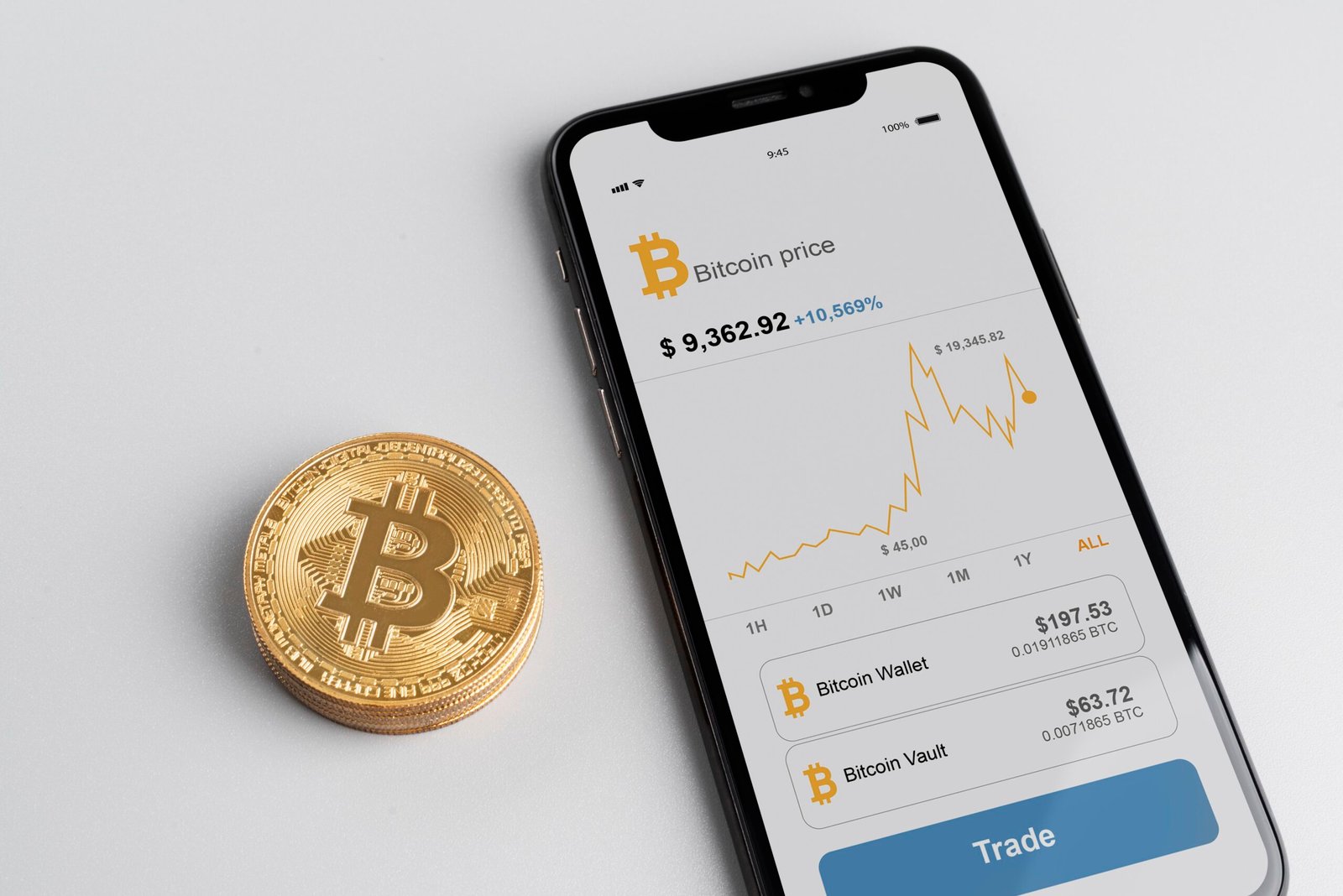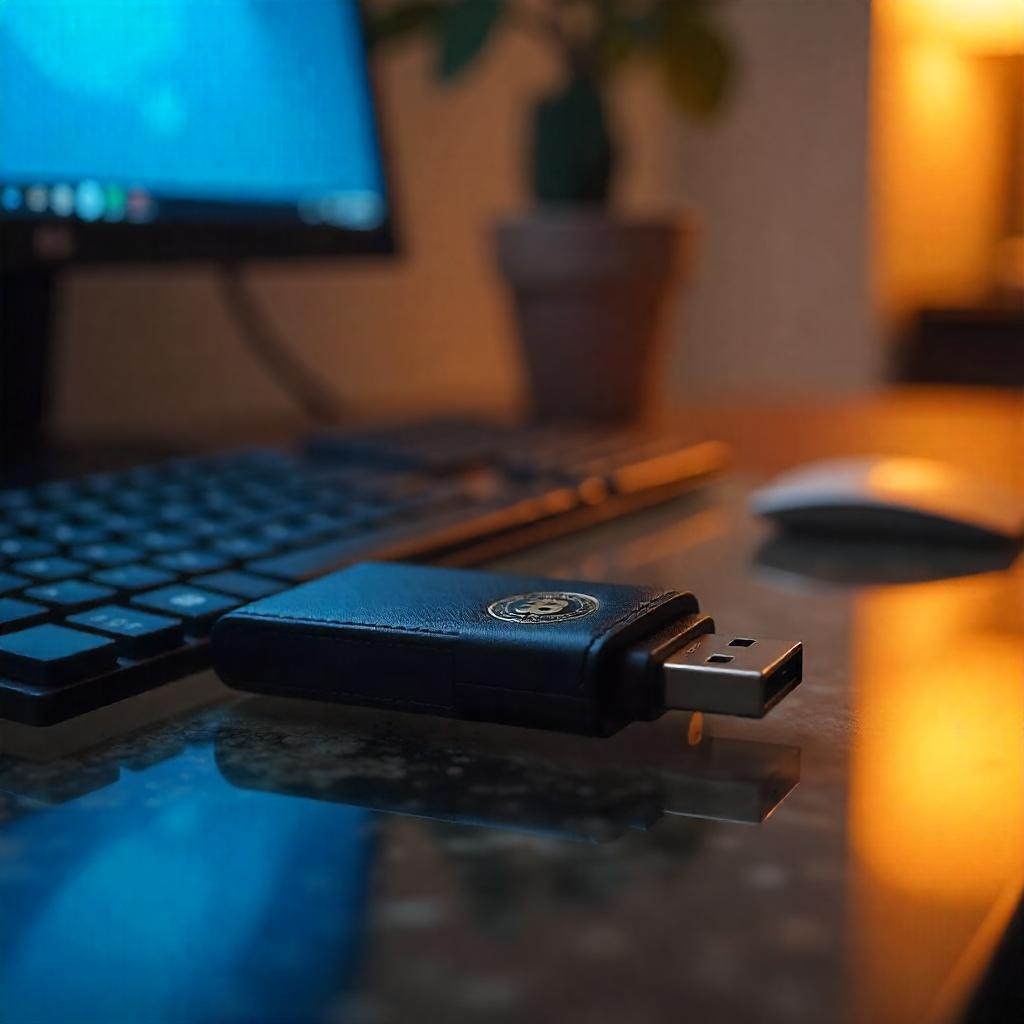In the burgeoning world of digital finance, the concept of a “crypto wallet” is central to how individuals interact with cryptocurrencies. Far from being a physical container, a crypto wallet is a sophisticated tool that empowers users to manage their digital assets securely and efficiently. This article will delve into the intricacies of crypto wallets, explaining their function, types, setup, and crucial security considerations, to be well-equipped to navigate the world of decentralized finance.
Summary
- What is a Crypto Wallet?
- Distinguishing Crypto Wallets from Physical Wallets
- Exploring Crypto Wallet Types
- Setting Up Your Crypto Wallet: A Step-by-Step Guide
- Key Terms and Concepts Associated with Crypto Wallets
- The Truth About Crypto Storage: On the Blockchain, Not In the Wallet
- How can you be sure your crypto is secure
- Can One Wallet Hold Different Cryptocurrencies?
- Choosing the Right Wallet for Your Needs
- Essential Knowledge for Every Crypto User
What is a Crypto Wallet?
A crypto wallet is a piece of software or hardware that allows you to store, manage, and transact with your cryptocurrencies. However, it’s crucial to understand that a crypto wallet doesn’t physically “hold” your digital assets in the same way a physical wallet holds cash. Instead, cryptocurrencies reside on a blockchain, a distributed public ledger.
A crypto wallet’s true function is to store your private and public keys. These cryptographic keys are what grant you ownership and control over your cryptocurrency holdings on the blockchain.
- Public Key: Think of this as your bank account number. You can share it freely with others for them to send you cryptocurrency.
- Private Key: This is your secret password or the key to your safe deposit box. It’s what allows you to access and spend your cryptocurrencies. It must be kept absolutely confidential.
When you “send” cryptocurrency, your wallet uses your private key to digitally sign the transaction, proving you are the owner and authorizing the transfer on the blockchain. When you “receive” cryptocurrency, the funds are sent to an address derived from your public key, and your wallet simply reflects the updated balance.
Distinguishing Crypto Wallets from Physical Wallets
The distinction between a crypto wallet and a physical wallet is fundamental.
A physical wallet holds physical banknotes and coins. If you lose your physical wallet, you lose the cash inside.
A crypto wallet, on the other hand, doesn’t hold the actual cryptocurrency. Instead, it holds the cryptographic keys necessary to access and control your cryptocurrency on the blockchain. If you “lose” your crypto wallet (e.g., your phone with a software wallet on it), you haven’t necessarily lost your crypto, provided you have securely backed up your private keys or seed phrase. With those, you can restore access to your funds on a new device.
This crucial difference underscores the importance of key management in the crypto world.
Exploring Crypto Wallet Types
The diverse ecosystem of crypto wallets caters to various needs, offering different levels of security, convenience, and functionality. They are broadly categorized into “hot” and “cold” wallets.
Hot Wallets: Connected and Convenient
Hot wallets are cryptocurrency wallets that are connected to the internet. They offer convenience for frequent transactions but come with inherent security risks due to their online nature.
- Software Wallets: These are applications installed on your computer (desktop wallets) or smartphone (mobile wallets).
- Desktop Wallets: Examples include Exodus or Electrum. They offer a good balance of security and control for regular use, as your private keys are stored on your computer.
- Mobile Wallets: Apps like Trust Wallet or MetaMask are popular for on-the-go transactions and accessing decentralized applications (dApps). They are user-friendly but rely on your mobile device’s security.
- Web Wallets: These are online services accessed through a web browser. While convenient, your private keys are managed by a third party, making them vulnerable if the service provider is hacked. Examples include wallets provided by centralized exchanges like Binance or Coinbase (It’s worth noting that many exchanges also provide their own hot wallets directly to users).

Cold Wallets: Offline and Secure
Cold wallets are cryptocurrency wallets that are not connected to the internet. This offline nature makes them significantly more secure for storing larger amounts of cryptocurrency, as they are immune to online hacking attempts.
- Hardware Wallets: These are physical devices specifically designed to store your private keys offline. Examples include Ledger and Trezor. When you need to make a transaction, you connect the device to your computer or phone, sign the transaction on the device itself (where the private key never leaves the secure chip), and then broadcast the signed transaction to the blockchain. This is generally considered the most secure way to store cryptocurrency.
- Paper Wallets: This involves printing your private and public keys (often as QR codes) onto a piece of paper and storing it offline. While extremely secure from online attacks, they are vulnerable to physical damage, loss, or theft. They are less common now due to the rise of user-friendly hardware wallets and the risks associated with improper creation or storage.


Setting Up Your Crypto Wallet: A Step-by-Step Guide
The process of setting up a crypto wallet varies slightly depending on the type, but the core steps remain similar. Here’s a general guide:
- Choose Your Wallet Type: Based on your needs (frequency of transactions, amount of crypto, security preference), decide between a hot or cold wallet. For beginners, a reputable mobile or desktop wallet is a good starting point, while a hardware wallet is highly recommended for larger holdings.
- Download/Acquire the Wallet Software/Device:
- Software Wallet: Download the official app from the developer’s website or a trusted app store. Always double-check the source to avoid phishing scams.
- Hardware Wallet: Purchase directly from the manufacturer’s official website or an authorized reseller to avoid tampered devices.
- Initiate Wallet Creation: Open the app or connect your hardware device and follow the prompts to “Create a new wallet” or “Set up a new device.”
- Generate Your Seed Phrase (Mnemonic Phrase): This is the MOST CRUCIAL step. Your wallet will display a sequence of 12, 18, or 24 words (your “seed phrase” or “recovery phrase”). Write these words down exactly as they appear, in the correct order, on a physical piece of paper. Do NOT take a screenshot, store it digitally, or share it with anyone. This seed phrase is the master key to your funds. If you lose it, you lose your crypto.
- Verify Your Seed Phrase: The wallet will usually ask you to confirm your seed phrase by re-entering some or all of the words to ensure you’ve written them down correctly. This is a vital check.
- Set a Strong Password/PIN: For software wallets, create a strong, unique password. For hardware wallets, set a PIN. This provides an additional layer of security for daily use.
- Explore Your Wallet Interface: Familiarize yourself with the interface. You’ll typically find sections for “Receive” (to get your public address), “Send” (to send crypto), “Balance,” and transaction history.
- Backup Your Seed Phrase Securely: After setup, ensure your written seed phrase is stored in multiple, secure, offline locations (e.g., a home safe, a safety deposit box). Consider fireproof and waterproof storage.
Key Terms and Concepts Associated with Crypto Wallets
Understanding the following terms is essential for effective crypto wallet management:

- Private Key: The secret alphanumeric code that grants you control over your cryptocurrency. Never share it.
- Public Key: Derived from your private key, used to receive cryptocurrency. Can be shared.
- Wallet Address: A shortened, user-friendly version of your public key, used as the destination for transactions.
- Seed Phrase (Mnemonic Phrase/Recovery Phrase): A sequence of words that can regenerate your private key and thus all your associated wallet addresses and funds. It’s your ultimate backup.
- Blockchain: The decentralized, public ledger where all cryptocurrency transactions are recorded and verified. Your crypto exists here, not in your wallet.
- Transaction Hash (TxID): A unique identifier for every transaction on the blockchain. You can use it to track the status of your transactions.
- Gas Fees: The cost associated with processing a transaction on a blockchain (particularly Ethereum). These fees compensate network validators.
- Decentralization: The principle that a system operates without a central authority, relying instead on a distributed network.
The Truth About Crypto Storage: On the Blockchain, Not In the Wallet
It’s a common misconception that cryptocurrencies are “stored” inside your wallet. To reiterate, this is incorrect. Cryptocurrencies always reside on their respective blockchains. Your wallet merely holds the cryptographic keys (private and public) that prove your ownership and allow you to interact with your holdings on the blockchain.
How can you be sure your crypto is secure
The proof of security lies in the ownership and sole possession of your private keys/seed phrase.
- When you have your private keys, you have cryptographic control over the funds associated with them on the blockchain.
- The blockchain itself provides the record of your ownership. By entering your public address into a blockchain explorer (a website that allows you to view public blockchain data), you can see your balance and transaction history, confirming your assets are there and awaiting your command.
The immutability and transparency of the blockchain, combined with the cryptographic security of your private keys, are the guarantees of your crypto’s safety.
Can One Wallet Hold Different Cryptocurrencies?
Yes, many modern crypto wallets are designed to be multi-currency wallets (Verify supported currencies before attempting to add them). This means they can hold and manage different cryptocurrencies, even if those cryptocurrencies operate on different blockchains (e.g., Bitcoin on its blockchain, Ethereum on the Ethereum blockchain).
The wallet software simply uses separate sets of private/public keys for each supported cryptocurrency or blockchain within the same application. This is highly convenient as it allows you to manage diverse portfolios from a single interface.
Choosing the Right Wallet for Your Needs
Selecting the “best” wallet depends entirely on your individual situation and risk tolerance:
- For Beginners and Small Amounts: A reputable mobile wallet (e.g., Trust Wallet, Coinbase Wallet) is often a good starting point due to ease of use.
- For Regular Trading/Transactions: A desktop wallet or a well-secured mobile wallet might suffice, but always be mindful of security practices.
- For Long-Term Holdings (HODLing) and Significant Amounts: A hardware wallet is unequivocally the best choice. Its offline nature provides superior security against hacking.
- For Accessing DeFi/DApps: Wallets like MetaMask (Ethereum and compatible chains) or Phantom (Solana) are essential for interacting with decentralized finance applications.
Consider the following factors:
- Security Features: Does it offer two-factor authentication (2FA)? Is it open-source (allowing for community security audits)?
- Ease of Use: Is the interface intuitive?
- Supported Cryptocurrencies: Does it support all the coins you plan to hold?
- Customer Support: Is reliable support available if you encounter issues?
- Reputation: What do other users say about the wallet? Look for established wallets with a strong track record.
Not Your Keys, Not Your Crypto

Essential Knowledge for Every Crypto User
Beyond the technical aspects, there are crucial practical considerations that users should be aware of:
- “Not Your Keys, Not Your Crypto”: This adage highlights that if you leave your crypto on an exchange, the exchange holds the private keys, not you. While convenient for trading, it introduces counterparty risk. If the exchange is hacked or goes bankrupt, you could lose your funds. Owning your private keys is true sovereignty. To manage risk, individuals have the option to keep or transfer a chosen amount of crypto on an exchange for trading or transactional convenience.
- The Irreversibility of Transactions: Unlike traditional banking, crypto transactions are irreversible. Once you send crypto, it’s gone. Double-check addresses meticulously.
- Scams and Phishing: The crypto space is rife with scams. Be wary of unsolicited messages, fake websites, and promises of unrealistic returns. Always verify URLs and never share your seed phrase.
- Responsibility of Self-Custody: With great power comes great responsibility. When you manage your own keys, you are solely responsible for their security. There’s no bank to call if you lose your private key or get scammed.
- Regular Backups: Even with hardware wallets, ensure you have a secure, offline backup of your seed phrase. Hardware can be damaged or lost.
- Software Updates: Keep your wallet software and hardware wallet firmware updated to benefit from the latest security patches.
- Understanding Network Fees (Gas): Be aware that sending cryptocurrency involves network fees. These fees can fluctuate based on network congestion.
By understanding the nature of crypto wallets, the vital role of private keys, and adhering to best security practices, individuals can confidently and securely participate in the exciting world of cryptocurrency.



